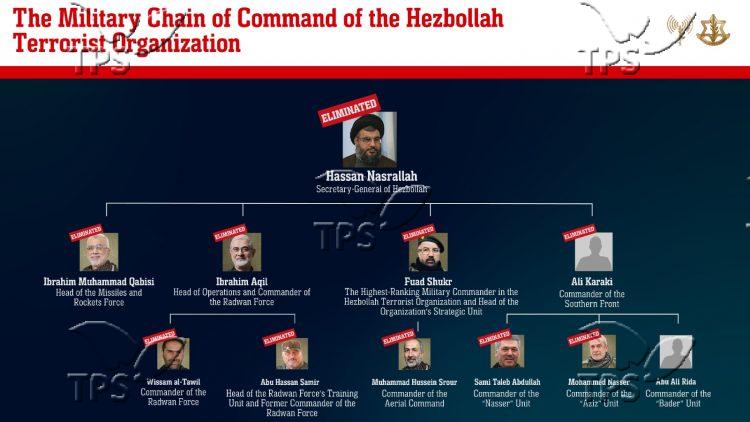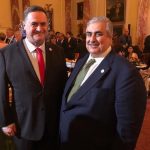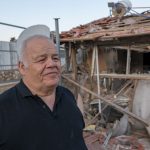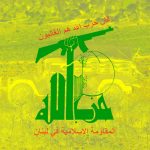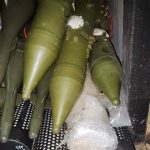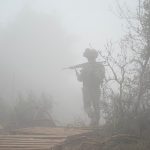Who Was Hezbollah’s Hassan Nasrallah?
Jerusalem, 28 September, 2024 (TPS-IL) -- Hezbollah, Iran and their allies were stunned by the death of Hezbollah Secretary General Hassan Nasrallah in a Friday night airstrike in Beirut. Both Israel and Hezbollah confirmed Nasrallah’s death on Saturday.
Nasrallah’s death, along with the elimination of numerous other senior commanders in air strikes and the sabotage of the terror group’s communications network has left Hezbollah in disarray.
In his first public comments on the assassination, Israeli Prime Minister Benjamin Netanyahu said on Saturday night that Nasrallah “wasn’t another terrorist; he was the terrorist,” calling the Hezbollah chief, “the central engine of Iran’s axis of evil.”
US President Joe Biden described Nasrallah’s elimination as “a measure of justice for his many victims, including thousands of Americans, Israelis and Lebanese civilians.”
Nasrallah was born in Beirut in 1960. He was active in politics from a young age, briefly joining the Shi’ite Amal Party while a student in Tyre. But at the age of 16, he traveled to Iraq where he met Shi’ite cleric Abbas al-Musawi, who later served as the Secretary-General of the Hezbollah terror organization. Nasrallah joined the Shi’ite Islamic movement, the Dawa Party, many of whose members later joined Hezbollah.
In 1982, he left the Amal Movement for good and, with the help of local Shi’ite figures == and Iranian support — established the Hezbollah terrorist organization, in which he obtained a senior position among Hezbollah’s founders. Shortly after, he was given responsibility for the Beqaa area, at just 22 years old.
In 1985, he was appointed as the Deputy Chairman of the Beirut Council, one of the three branches of the organization at that time, and quickly became the organization’s military leader in the city. Additionally, he served as a member of Hezbollah’s politburo.
In 1987, he was appointed Head of the Operational Executive Council of the organization, and became a member of Hezbollah’s Supreme Council. When Hezbollah co-founder and first Secretary General Abbas Musawi was killed in an Israeli ambush of his motorcade in 1992, Nasrallah was appointed to replace him at just 32 years old.
During his 32 years at the top of Hezbollah, Nasrallah was responsible for the murder of numerous Israeli civilians and soldiers, planning and executing thousands of terrorist actions against Israeli citizens and others around the world. He served as the central decision-maker of all strategic decisions within the terrorist organization.
Hezbollah carried out several major terror attacks after he assumed leadership.
1994: A Hezbollah suicide bomber detonates a truck bomb at the Buenos Aires Jewish community headquarters, killing 85 and injuring over 300 in 1994.
1996: A Hezbollah suicide bomber blows up part of the Khobar Towers in Saudi Arabia, killing 19 US servicemen enforcing a no-fly zone operation over southern Iraq.
2000: Hezbollah abducts Israeli businessman Elhanan Tannenbaum after luring him to Dubai for a drug deal. The same year, Hezbollah abducts three soldiers in a cross-border raid.
2005: Lebanese Prime Minister Rafik Hairi is assassinated in a car-bombing. A UN-backed tribunal later indicts four members of Hezbollah.
2006: In a cross-border raid, Hezbollah kills eight soldiers and abducts two, triggering the Second War in Lebanon. The war ends when Hezbollah and Israel accept UN Security Resolution 1701, which demands an immediate ceasefire and for Hezbollah to be disarmed south of the Litani River. Nasrallah lived underground for the rest of his life.
2012: Hezbollah blows up an Israeli tour bus in the Bulgarian city of Burgas, killing six people and injuring 32.
Since 1992, Hezbollah also attempted to carry out attacks that were ultimately thwarted in Turkey, Thailand, Azerbaijan, India, Georgia, and Bulgaria.
After the Hamas attacks of October 7, 2023, Hezbollah began firing rockets and launching drones at northern Israel communities. More than 60,000 residents of northern Israel were forced to evacuate their homes. Nasrallah and other Hezbollah leaders have repeatedly said they would continue the attacks to prevent Israelis from returning to their homes.
Israeli officials call for Hezbollah to be disarmed and removed from southern Lebanon in compliance with UN Security Council resolution 1701.

